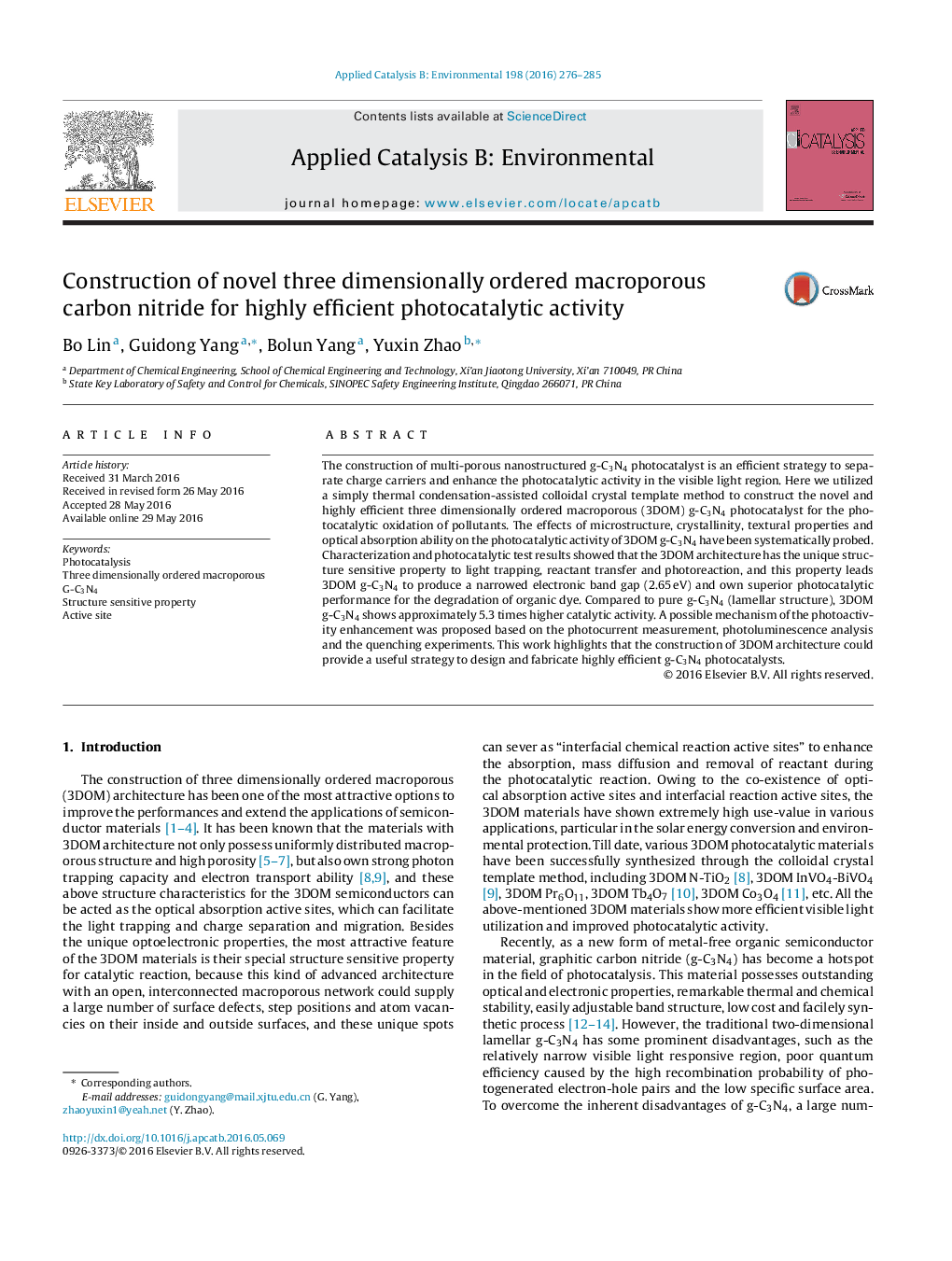| Article ID | Journal | Published Year | Pages | File Type |
|---|---|---|---|---|
| 44737 | Applied Catalysis B: Environmental | 2016 | 10 Pages |
•Novel 3DOM g-C3N4 was successfully constructed.•3DOM g-C3N4 shows an extremely prominent visible-light photodegradation performance.•The unique advantages of 3DOM architecture are systematically demonstrated.•The trapping, transfer and recombination of photoexcited charge carriers were probed.•The effect of optical absorption and interfacial reaction active sites was discussed.
The construction of multi-porous nanostructured g-C3N4 photocatalyst is an efficient strategy to separate charge carriers and enhance the photocatalytic activity in the visible light region. Here we utilized a simply thermal condensation-assisted colloidal crystal template method to construct the novel and highly efficient three dimensionally ordered macroporous (3DOM) g-C3N4 photocatalyst for the photocatalytic oxidation of pollutants. The effects of microstructure, crystallinity, textural properties and optical absorption ability on the photocatalytic activity of 3DOM g-C3N4 have been systematically probed. Characterization and photocatalytic test results showed that the 3DOM architecture has the unique structure sensitive property to light trapping, reactant transfer and photoreaction, and this property leads 3DOM g-C3N4 to produce a narrowed electronic band gap (2.65 eV) and own superior photocatalytic performance for the degradation of organic dye. Compared to pure g-C3N4 (lamellar structure), 3DOM g-C3N4 shows approximately 5.3 times higher catalytic activity. A possible mechanism of the photoactivity enhancement was proposed based on the photocurrent measurement, photoluminescence analysis and the quenching experiments. This work highlights that the construction of 3DOM architecture could provide a useful strategy to design and fabricate highly efficient g-C3N4 photocatalysts.
Graphical abstractFigure optionsDownload full-size imageDownload as PowerPoint slide
